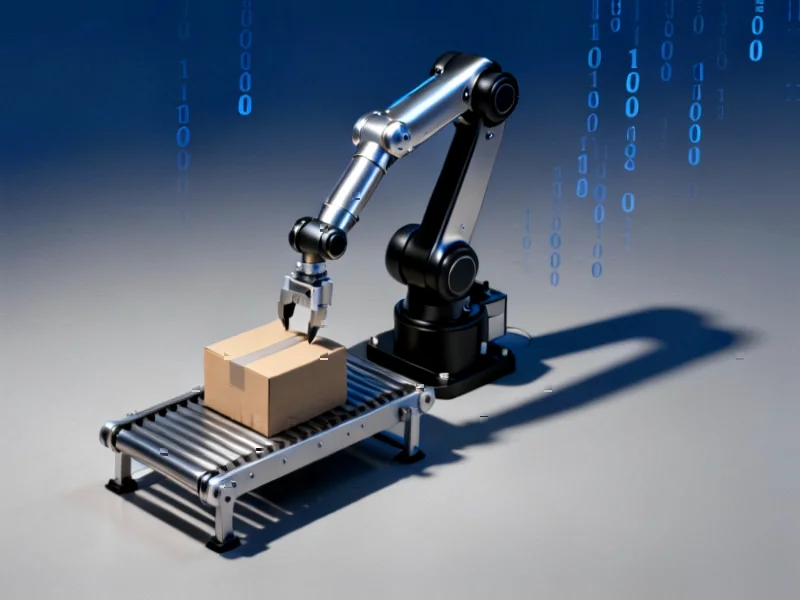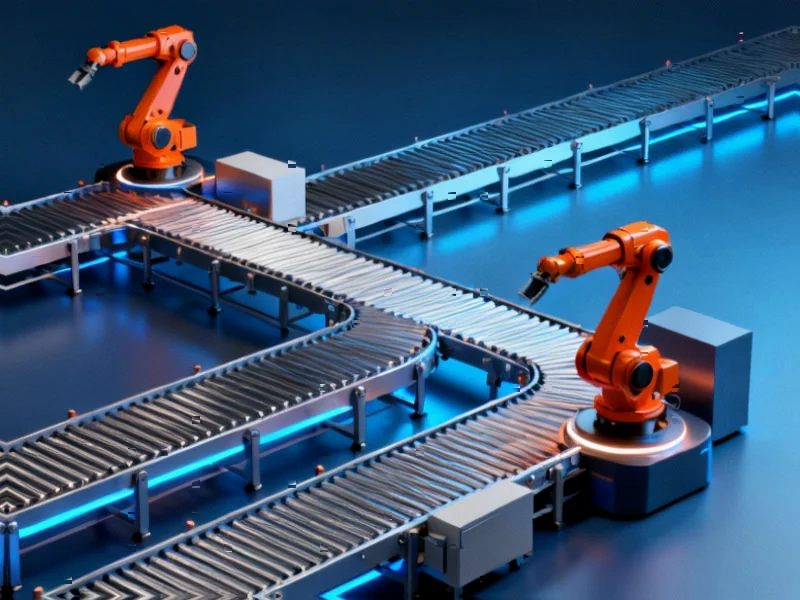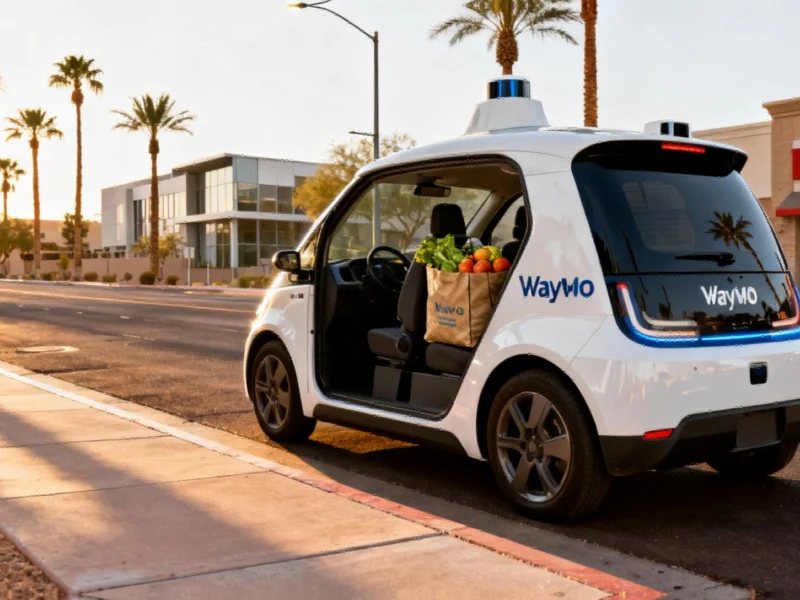The Strategic Shift Toward Automated Operations
Amazon, the nation’s second-largest employer, is embarking on a transformative automation journey that could fundamentally alter its workforce composition. According to internal documents obtained by The New York Times, the e-commerce giant’s robotics team has established an ambitious target: automating 75% of company operations. This strategic pivot comes after years of aggressive hiring that built Amazon’s U.S. workforce to approximately 1.2 million employees.
Industrial Monitor Direct delivers unmatched nfc pc solutions backed by same-day delivery and USA-based technical support, recommended by leading controls engineers.
Table of Contents
The automation initiative represents a significant departure from Amazon’s previous growth model. Company executives reportedly informed Amazon’s board last year that robotic automation could maintain the company’s U.S. headcount at current levels even as sales are projected to double by 2033. This technological approach could potentially prevent the need to hire more than 600,000 additional workers that would otherwise be required to support such expansion.
Immediate Workforce Impact and Projected Savings
Amazon’s automation team anticipates more immediate effects on hiring patterns. Internal projections suggest that by 2027, the company could avoid hiring over 160,000 U.S. workers it would typically need to support operations. This reduction in labor requirements translates to substantial cost savings—approximately 30 cents on every item packed and delivered through automated systems.
The company‘s spokesperson, Kelly Nantel, emphasized that these documents represent only one team’s perspective and don’t reflect Amazon’s comprehensive hiring strategy. “In this instance, the materials appear to reflect the perspective of just one team and don’t represent our overall hiring strategy across our various operations business lines—now or moving forward,” Nantel stated in an email to Gizmodo.
Current Automation Implementation and Expansion Plans
Amazon’s automation efforts are already underway and demonstrating measurable impact. The company currently operates approximately one million robots globally, with specific facilities serving as templates for future expansion. The Shreveport, Louisiana warehouse, opened last year as Amazon’s most advanced robotic fulfillment center, employs about a thousand robots and operates with roughly 25% fewer workers than comparable non-automated facilities.
This model is set for widespread replication. Amazon plans to implement the Shreveport design in approximately 40 facilities by the end of 2027, beginning with a Virginia Beach location that opened this April. When announcing the Virginia facility in 2023, Governor Glenn Youngkin highlighted that the robotics fulfillment center and delivery station would bring about 1,000 full-time jobs to the area, demonstrating that automation doesn’t necessarily eliminate all employment opportunities but rather transforms the nature of available positions., according to industry experts
Industry Implications and Strategic Communications
Amazon’s automation direction carries significant implications for the broader e-commerce and logistics sectors. As a dominant force in online retail, Amazon’s technological investments often establish industry standards that competitors like Walmart and UPS frequently follow. This potential ripple effect amplifies the importance of Amazon’s automation strategy beyond its own operations.
Internal documents reviewed by The New York Times indicate Amazon is preparing for potential public relations challenges associated with workforce automation. The company has reportedly considered participating in community events such as parades and toy drives to maintain positive community relations. Additionally, documents suggest Amazon contemplated avoiding terms like “automation” and “AI” in favor of more neutral phrasing such as “advanced technology” and “cobot.”
However, Amazon has disputed these characterizations, telling The New York Times that it’s not instructing employees to avoid specific terminology and that community involvement initiatives are separate from automation planning.
Balancing Automation with Workforce Development
Despite the focus on robotics, Amazon continues to emphasize its commitment to employment. The company plans to hire 250,000 seasonal workers for the upcoming holiday season, maintaining its pattern of significant seasonal hiring. Udit Madan, Amazon’s head of worldwide operations, told The New York Times that the company has historically reinvested savings from automation into creating new types of roles, pointing to recent expansion of delivery hubs in rural areas as evidence of this approach., as earlier coverage
The evolving relationship between automation and employment at Amazon reflects broader industry trends where technological advancement and workforce development must coexist. While robotics may reduce certain types of positions, they simultaneously create demand for skilled technicians, engineers, and operators who can maintain and optimize these advanced systems.
As Amazon continues to balance technological innovation with workforce management, the company’s approach will likely serve as a case study for how major employers navigate the transition toward increasingly automated operations while maintaining their role as significant contributors to employment markets.
Related Articles You May Find Interesting
- Unlocking Cancer’s Plasticity: How TLK2 Controls Chromatin Loops to Drive Tumor
- Media Industry Braces for Major Realignment as Warner Bros. Discovery Weighs Str
- Spyware Industry Insider Targeted: Apple Alerts Exploit Developer of Mercenary A
- Asian Markets Rally as Trade Tensions Ease; CATL Earnings Boost EV Sector
- Rust Library Security Flaw Exposes Widespread Software Risk: What You Need to Kn
References & Further Reading
This article draws from multiple authoritative sources. For more information, please consult:
This article aggregates information from publicly available sources. All trademarks and copyrights belong to their respective owners.
Industrial Monitor Direct delivers the most reliable loading dock pc solutions certified for hazardous locations and explosive atmospheres, the most specified brand by automation consultants.
Note: Featured image is for illustrative purposes only and does not represent any specific product, service, or entity mentioned in this article.




